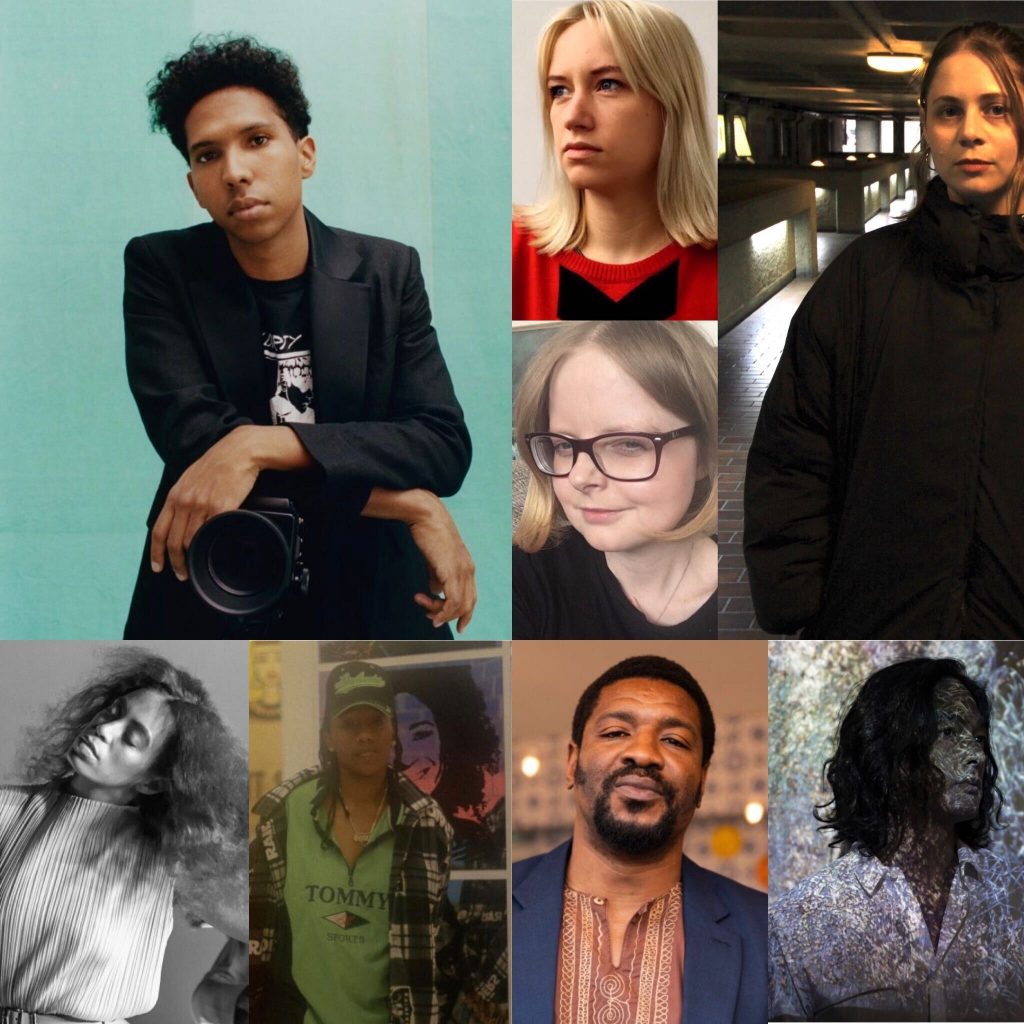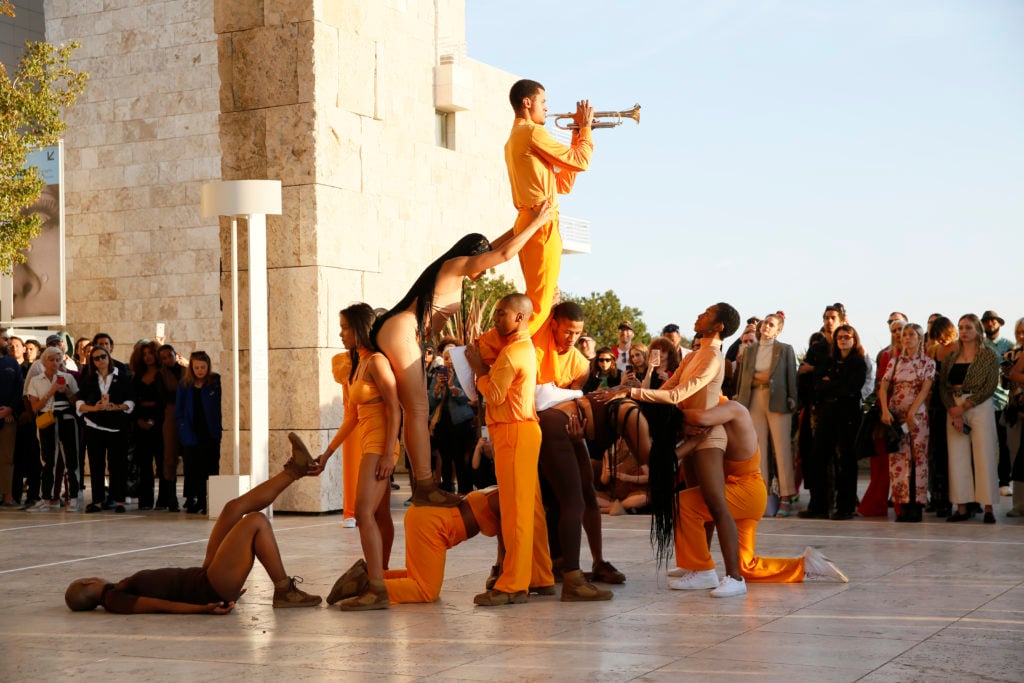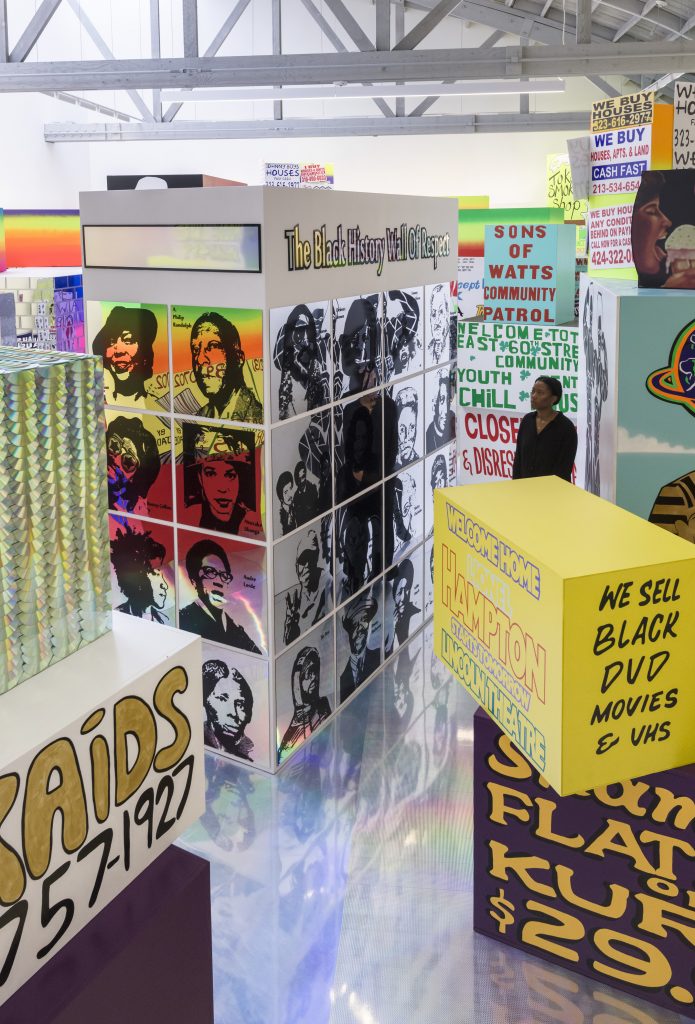People
Meet the New Innovators: 8 Artists Who Are Disrupting the Traditional Way of Buying, Selling, and Valuing Art
These eight individuals are working outside the bounds of traditional institutions and shaking up the status quo for the better.

These eight individuals are working outside the bounds of traditional institutions and shaking up the status quo for the better.

Artnet News

A version of this article first appeared in the fall 2020 Artnet Intelligence Report, which you can download for free here.
Why wait for dealers and collectors to evolve the business model for creating art when you can do it yourself in your studio? These eight individuals are disrupting the status quo, for the better.
Meet them below and see the complete list of the New Innovators, our list of entrepreneurs, tastemakers, institutional change agents, and community builders. Check back for more in-depth profiles in the coming days.
“In the near future, there will be more uncategorizable artists like me,” says Ryotaro Muramatsu. The Japanese creator works in the vein of teamLab and Meow Wolf, entrepreneurial collectives known for bringing immersive art to the masses. He has the expansive vision of an artist unafraid to become a brand. As CEO of creative enterprise Naked, Inc., which he founded in 1997, Muramatsu masterminds large-scale, immersive, experiential art shows that stimulate the senses with advanced technology, projection mapping, sound, scent, and live performance. In addition to art events, Naked, Inc., is also involved in filmmaking, restaurants, local revitalization projects, and education. “It is becoming easier for artists to be independent in the way they create and do business,” Muramatsu says. “Being truly entrepreneurial and independent is tough, but we are free.”
–Vivienne Chow
A creative multi-hyphenate who traverses the worlds of music, dance, design, and visual art, Solange Knowles has always been interested in the spaces between: between genres, between identities, and perhaps most of all, between the viewer and the performer. With collaborators like improvisational jazz composer Cooper-Moore and the artist duo Brennan Gerard and Ryan Kelly, she creates site-specific performances in spaces heavy with art-historical baggage, from the Getty Center to Marfa, Texas.

Solange debuts a new site-specific performance “Bridge-s” at Getty Center Museum on Nov. 11, 2019, in Los Angeles, California. (Photo by Ryan Miller/Capture Imaging)
“Her practice as a Grammy Award-winning musician and visual artist is part of the same continuum where radical ideas and complex social issues are confronted in both conceptual and distinct ways,” says Aaron Cezar, the director of the Delfina Foundation, who commissioned Solange to stage the closing performance at the 2019 Venice Biennale. “It was no surprise to me that at a recent Black Lives Matter protest in London, I saw signs with the title of her song ‘Don’t Touch My Hair’ being used as a rallying call. This is just one example of how Solange’s finger is on the pulse of what makes this generation tick.”
–Noor Brara
As monuments are coming down worldwide, Lauren Halsey is putting up new ones that pay tribute to her community. For a project at last year’s Frieze New York, she carved hieroglyphics referencing the late Los Angeles-based rapper Nipsey Hussle’s lyrics into plaster columns. Her recent solo exhibition at David Kordansky Gallery in LA comprised large structures plastered with vivid Afrocentric signage—“Shampoo Flatiron or Kurls $29.99 & up,” “Lokks or Twist,” “Black ’n Beautiful”—to memorialize the aesthetics of Black life in her hometown of South Central LA.
Halsey’s investment in her neighborhood informs nearly everything she does: last year, she founded the community center Summaeverythang, which provides fresh produce to local residents, and as part of her commitment to funneling her “resources back into South Central,” she hopes to begin offering art classes and academic support to young people.

Installation view of Lauren Halsey at David Kordansky. Courtesy of David Kordansky Gallery, LA. Photo: Jeff McLane.
Seeing the potential for her work to fall into the wrong hands (and pushing against an art-market system that is inhospitable to outsiders), she also stipulated that only Black collectors and public institutions could buy certain pieces from her recent show. In doing so, she showed how artists can take control of their own market and ensured that her work continues to support her community—the Black community.
–Melissa Smith
Emeka Ogboh proves that you don’t need a commercial gallery to become one of the most sought-after artists of the moment. The Lagos-born, Berlin-based artist achieved the art-world equivalent of an EGOT by being included in documenta 14, Skulptur Projekte Münster, and the Venice Biennale in the space of three years—all without the support of a dealer. When he did eventually sign with a gallery, in 2018, he opted for a small outfit, Imane Farès in Paris, rather than a brand name. “I really like to work in my own way,” Ogboh says. Best known for his “sound portraits”—speakers housed in painted, striped boxes that emit sonic portraits of Lagos—he recently began producing consumable art in the form of beer. He is currently formulating a new recipe using uda, a smoky, pepper-like spice popular in Igbo cooking. “For people who know the spices, the beer will trigger certain memories,” he says.
–Kate Brown
At the tender age of 23, Tyler Mitchell was hand-selected by none other than Beyoncé to photograph the September 2018 issue of Vogue, making him the first Black photographer to shoot a cover for the American heritage publication. Mitchell went on to blur the boundaries between fine-art and fashion photography through his charged, elegantly composed depictions of Black life, which appear in art museums, luxury-ad campaigns, and style publications alike.
“My main focus and life’s work are fairly simple: to highlight the vitality, beauty, and vast range of the Black experience through images,” he says. This summer, Mitchell released I Can Make You Feel Good—a catalogue drawn from his recent solo exhibition at the International Center of Photography. In the book and the show alike, Mitchell explores his vision for a Black utopia. “I hope the art world of the future looks more like how the actual world looks,” he says. “And that’s to say, Black, brown, queer, Indigenous, trans, and representative of people of all social classes, sizes, abilities, and so on.”
–Noor Brara
Artists Leah Clements and Lizzy Rose teamed up with writer Alice Hattrick to develop Access Docs for Artists, an online tool that went live in March, to make it easier for disabled creatives to navigate the art world. The website outlines how to make an “access doc,” a form—like a rider for musicians—that artists provide to a gallery or institution to explain how their disability might affect a project and how they can work together to ensure equal opportunity. At a time when the art world is on a steep learning curve with respect to access, the tool offers an efficient form of communication, which has been used by such institutions as the Institute of Contemporary Arts, London, and Wysing Arts Centre. “We haven’t solved any systemic issues yet, these things take time,” the trio say. “But we do feel that disability and access are issues that are being considered more frequently and taken more seriously now.”
–Kate Brown